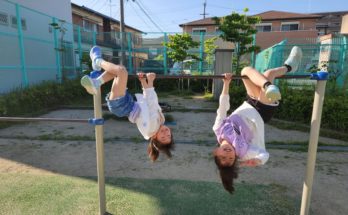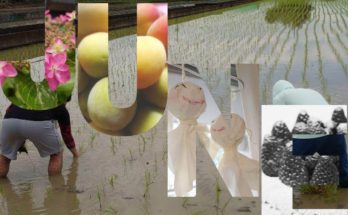How do you count in English? In English, you can add “One, two, three, four…” in front of the object for most things, except for some peculiar circumstances when wanting to count uncountable nouns, such as “one piece of~“”a pair of~“, etc. However, in Japanese, you need to use counter words (助数詞) when you count things. Counter words differ depending on what you are counting. It is said that there are more than 500 counter words, and about 100 of them are actually used in everyday life. To be honest, even for us Japanese, counting is difficult and confusing.
In this article, I will introduce the counting system that we Japanese often use, as well as an interesting counting system unique to the Japanese language. The counting method is often based on the shape and properties of the object, so it is good to learn the counters while thinking about their meanings.
1. Basic Counting
First, let’s learn the basic counting system. There are two basic counting systems in Japanese, which correspond to 1, 2, 3, 4, and 5 in English.
◆ 1/ Ichi いち, 2/ Ni に, 3/ San さん, 4/ Yon よん, 5/ Go ご, 6/ Roku ろく, 7/ Nana なな, 8/ Hachi はち, 9/ Kyu きゅう, 10/ Jyu じゅう
◆ 1/ Hitotu ひとつ, 2/ Futatu ふたつ, 3/ Mittu みっつ, 4/ Yottu よっつ, 5/ Itutu いつつ, 6/ Muttu むっつ, 7/ Nanatuななつ, 8/ Yattu やっつ, 9/ Kokonotu ここのつ, 10/ Touとう
2. Frequently Used Counting Words
In Japanese, people and things are counted separately, unlike English.
1) How to count things
■~Ko 個 (こ)
When counting small things, we use “~ko こ.” The “~ko” sometimes changes to “~tsu つ” in some cases.
Examples: stones, apples, cups, balls, accessories, erasers, etc.
Counting: 1個/ I-kko いっこ, 2個/ Ni-ko にこ, 3個/ San-ko さんこ, 4個/ Yon-ko よんこ, 5個/ Go-ko ごこ, 6個/ Ro-kko ろっこ, 7個/ Nana-ko ななこ, 8個/ Hachi-ko はちこ, 9個/ Kyu-ko きゅうこ, 10個/ Ju-kko じゅっこ
■~Mai 枚 (まい)
When counting thin, flat things, we often use “~mai 枚”.
Example: Paper, shirts, towels, plates, CDs, blankets, etc.
Counting: 1枚/ Ichi-mai いちまい, 2枚/ Ni-mai にまい, 3枚/ San-mai さんまい, 4枚/ Yon-mai よんまい, 5枚/ Go-mai ごまい

■~Hon本 (ほん)
When counting long, thin things, we often use “~hon ほん.” In addition, we also use it to count the number of trains, baseball home runs, movies, and games. The “hon” also changes the reading of some numbers.
Example: Pencils, umbrellas, trees, flowers, carrots, plastic bottles, teeth, etc.
Counting: 1本/ I-pon いっぽん, 2本/ Ni-hon にほん, 3本/San-bon さんぼん, 4本/Yon-hon よんほん, 5本/Go-hon ごほん, 6本/Ro-pon ろっぽん, 7本/Nana-hon ななほん, 8本/Ha-pon はっぽん, 9本/Kyu-hon きゅうほん, 10本/Jyu-pon じゅっぽん

2) How to Count People
■~Nin 人 (り、にん)
When counting people, use “~ri り, nin にん.” Depending on the number, the reading will change.
Counting: 1人/ Hito-ri ひとり, 2人/ Futa-ri ふたり, 3人/ San-nin さんにん, 4人/ Yo-nin よにん, 5人/ Go-nin ごにん

3) How to count living creatures
Animals: Cats and dogs are counted as 1匹 (i-piki) or 2匹(ni-hiki), but elephants and horses are counted as 1頭 (i-tou) or 2頭 (ni-tou). The difference is that if they are larger than human beings, they are counted as i-tou or ni-tou. If they are smaller than humans, they are counted as i-piki or ni-hiki. This counting system remains the same for calves, foals, and kittens.


Birds: When counting birds, count 1羽 (ichi-wa) or 2羽 (ni-wa). The “羽” means a bird’s feather.

Insects: Same as counting small animals, count 1匹 (i-piki) or 2匹 (ni-hiki).

Fish: Fish swimming and alive are counted as 1匹 (i-piki) or 2匹 (ni-hiki), and fish in the fishman’s store are counted as 1尾 (ichi-bi) or 2尾 (ni-bi). The “尾 bi” means the tail of a fish.

3. Counting Words of specific objects
Here is an unusual and special way of counting.
■Chests・・・Sao(棹)
Counting: 1棹/hito-sao, 2棹/futa-sao…
Origin: In the early Edo period, when chests of drawers became popular, wardrobe cases called nagamochi were common. When a fire broke out in Edo, people took their nagamochi with wheels and rolled them out. However, the roads were blocked and many people died. So the Edo shogunate banned the use of nagamochi with wheels. Later, when people carried a nagamochi, they began to carry them on a pole (sao). The chests, which became popular around that time, were also carried in the same way.

■Chopsticks・・・Zen(膳)
Counting:1膳/ichi-zen, 2膳/ni-zen….
Origin: During the Kamakura period (1185-1333), people began to use one set of chopsticks per person at meals. It is said that this is why they started counting them “zen”. “Zen” means a tray. It is said that during the Kamakura period (1185-1333), people began to use a tray for one person when eating, and a set of chopsticks was set on each tray, which led to the counting of chopsticks used for meals as a “zen”

■Rabbits・・・Wa(羽)
Counting: 1羽/ Ichi-wa , 2羽/ ni-wa , 3羽/ San-wa….
Origin: One explanation is that Buddhist monks, who could not eat four-legged beasts because of Buddhist teachings, ate rabbits that stood and splayed on two legs, considering them birds. Another is that the rabbit’s large, long ears look like bird feathers.

■Crabs・・・Hai (杯)
Couning: 1杯/i-pai、2杯/ni-hai、3杯/san-bai…
Origin: Boiled or frozen crabs are counted as “hai 杯” because their shells are round and shaped like containers. However, live crabs are counted as “1匹 (i-piki),2匹 (ni-hiki)….”

■Squid and octopuses・・・Hai(杯)
Counting: 1杯/i-pai, 2杯/ni-hai, 3杯/san-bai…
Origin: “Hai” means a cup. The body of the squid or octopus is shaped like a cup that can hold liquid. That is why it is counted as a “hai”.

■Cabbages or Chinese cabbages・・・Tama(玉)
Counting:1玉/hito-tama, 2玉/futa-tama…
Origin: Tama means ball. Harvested and sold uncut, they are round and shaped like a ball, so they are counted as “hito-tama, futa-tama”.


■ Sushi・・・Kan(貫)
Counting:1貫/i-kkan, 2貫/ni-kan…
Origin: During the Edo period, sushi developed as a fast food that could be eaten quickly and easily. The basic unit of bite-sized sushi, made by combining fish filets and sushi rice, is a “single nigiri”. It came to be called i-kkan. When you order it at a sushi restaurant, it comes in a set of two. However, be careful that its listed price is for i-kkan.

■ Zaru soba・・・Mai(枚)
Counting: 1枚/ichi-mai, 2枚/ni-mai…
Origin: It is said that the number of pieces of buckwheat noodles served was counted as ichi-mai and ni-mai, as a serving size.

■ Tofu・・・Cho(丁)
Counting: 1丁(i-chou), 2丁(ni-cho)…
Origin: “Cho” represents an even number. Around the Edo period, tofu was sold in sets of two, so tofu was counted as 1 chou. Currently, one piece of tofu is called “i-cho” and a pack of tofu is called a “ichi-pakku.”

Lastly…,
How do you feel about the unique Japanese way of counting? Frankly speaking, it is difficult even for me, a Japanese person. In researching for this article, I was surprised to find that there are so many ways to count numbers and that there are some ways that I don’t even know. I’d like to introduce to you other interesting ways of counting, but there is no end to them. If you don’t know how to count, use the most orthodox way of counting “hi-totu, fu-tatu, mi-ttu” and you should be able to communicate. I think language is a living thing. A word born in one era becomes common and is passed down to the next era. The Japanese counting system is difficult to learn, but I hope you will see it as a sign of the Japanese nature to take good care of things.
Business training instructor. I’m originally from Takarazuka in Hyogo Prefecture in the Kansai area. Now I live in Yokohama. I love exercising, traveling, watching movies, art, and nature.




